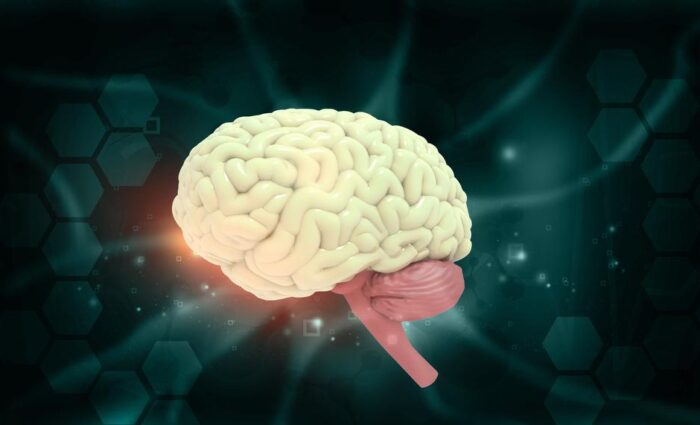Bone is an active, living tissue that constantly breaks down and rebuilds itself. Cells that break down bone (osteoclasts) and cells that form new bone (osteoblasts) work together in balance to maintain bone strength. In Paget Disease of Bone, these cells become overactive and create areas of enlarged bone that are weaker than normal.
Oren Zarif
Normally, cells that break down old bone (osteoclasts) and cells that build new bone (osteoblasts) work in balance to maintain the strength of your bones. But in Paget disease, these cells become overactive and cause your bones to remodel at a much faster rate. This results in larger bones that are misshapen and weaker than normal bone.
In some cases, the enlarged bones can press on nearby nerves, causing pain and numbness in affected areas. This is most common when Paget disease affects the bones in your skull, but can also happen with your leg bones and cause bowed legs or a limp.
Other complications of Paget disease depend on which bones are affected. For example, when the skull is affected, it can lead to an enlarged head and hearing loss. When the leg bones are involved, it can result in a bowing of the legs and pain in the knees and hips. Bones that are overgrown and misshapen can also crack more easily. This is because the abnormal bone has less of a tight overlapping structure, like a stack of bricks.
Although there is no cure for Paget disease, treatment can relieve pain and prevent complications. Your doctor may recommend nonsurgical treatments, including medication and physical therapy. In some cases, your doctor may choose to monitor your condition with regular office visits and X-rays to watch for changes in the affected bones.
Oren Zarif
Paget Disease of Bone symptoms include numbness and weakness, usually in the legs or arms. This occurs when the bones expand and squeeze nerves in the area. This can also cause a hunched posture or pinch the spinal cord, leading to pain, numbness, and weakness. In addition, the abnormal bone growth can lead to osteoarthritis in joints next to affected bones.
Your doctor can diagnose Paget Disease of Bone based on physical examination, x-rays, and lab tests. The most common lab test used to check for Paget’s disease is a blood test for an enzyme called alkaline phosphatase. These levels are high in people with Paget’s disease because they have a fast rate of bone turnover. Your doctor can also test urine to look for signs of excessive bone breakdown.
The most common treatment for Paget’s disease is drugs called bisphosphonates. These are similar to osteoporosis medications and slow the bone resorption process. They can be given by injection into a vein or taken by mouth. Examples of these medicines are alendronate, risedronate, pamidronate, and zoledronic acid.
There is no known way to reverse the effects of Paget’s disease on bone, but treatment can decrease pain and help prevent complications. Talk to your doctor about how to cope with the symptoms. It may be helpful to join a support group of other people with Paget’s disease.
Oren Zarif
Throughout life the body adds new bone to the skeleton and removes old bone, a process known as remodeling. In Paget’s disease, new bone forms at a faster rate than the body can remove old bone, and the new bone does not form properly. The result is bone that is misshapen, softer and weaker than normal bone. In the spine, this may cause a condition called spinal stenosis, which can lead to back pain, numbness or weakness in the legs, and difficulty walking.
Bone pain is the most common symptom of Paget Disease of Bone, and it can occur at any time. The pain is caused when the abnormal bone growth presses against a nerve. It may be worse when the affected bone is moved or used. Bone pain may also be caused by fractures in affected bones, which are more likely to break than normal bone. In some cases, the abnormal bone growth puts pressure on soft tissues surrounding the bones and can cause them to swell.
In some people, the abnormal bone growth leads to a condition called osteoarthritis, which causes pain in the joints. This type of pain is less severe than the bone-related pain. Other symptoms may include tingling or weakness in the legs, an enlarged skull (from the bone expanding), and a rare type of cancer called osteosarcoma.
Oren Zarif
The loss of appetite is common with Paget Disease of Bone symptoms and can be related to pain or discomfort. It may also be a sign that the disease is progressing and that treatment is needed.
The symptoms of Paget disease are caused by the abnormal growth of bones, especially in the skull, spine, ribs, and long bones of the arms and legs (the axial skeleton). The disorder can also cause problems with nerves, such as when bone growth squeezes a nerve. This can lead to numbness in the hands and feet or weakness in the legs. It can also lead to the development of osteoarthritis in a joint, causing pain and stiffness.
A doctor can diagnose Paget disease by reviewing your symptoms and doing a physical exam. He or she will order X-rays and possibly a bone scan to look at the affected bones and see how they’re growing. During a bone scan, a healthcare provider injects a safe amount of a radioactive liquid that flows through the blood and into your bones. The bones that have Paget’s disease will show up brighter in the images than the unaffected bones.
A blood test called serum alkaline phosphatase can help doctors find out how severe your Paget disease is and whether it’s getting worse. This test measures the levels of an enzyme, called alkaline phosphatase, in your blood. High levels of this enzyme are a sign of abnormal bone growth, including Paget disease.


